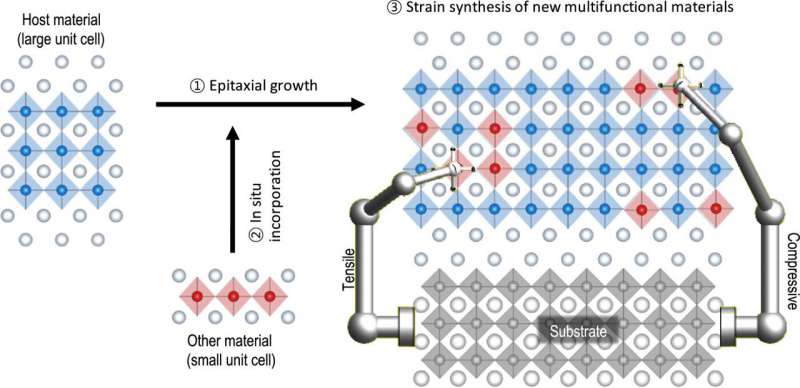Theoretical material design and experimental synthesis
have advanced in the past few decades with a key role in the
development of functional materials, useful for next generation
technologies. Ultimately, however, the goal of synthesis science
remains to be achieved in order to locate atoms in a specific
position of matter. In a new report now published on Science
Advances, Changhee Sohn and researchers in materials science and
nanostructure physics in the U.S. and the Republic of Korea
developed a unique method to inject elements in a specific
crystallographic position in a composite material via strain
engineering. The team showed a powerful way to use strain to
artificially manipulate the atomic position for the synthesis of
new materials and structures. The results are applicable to a wide
range of systems to provide a new route to functional
materials.
Strain-driven autonomous control of cation distribution for
artificial ferroelectrics



